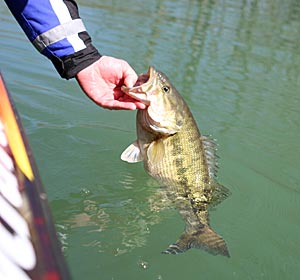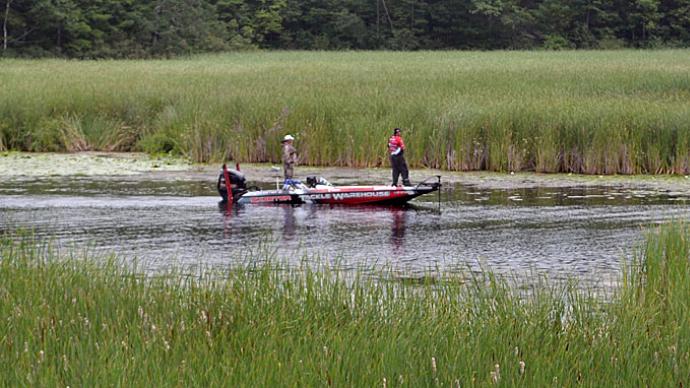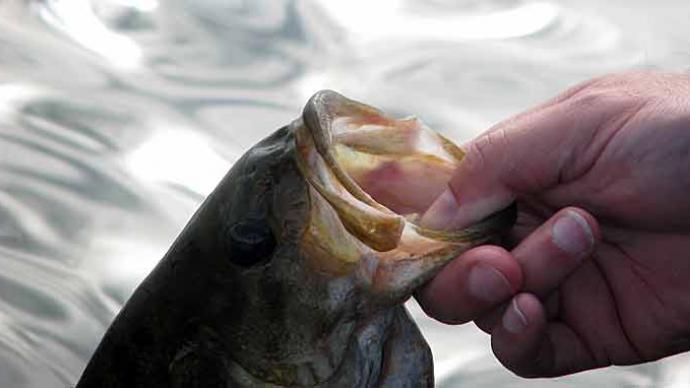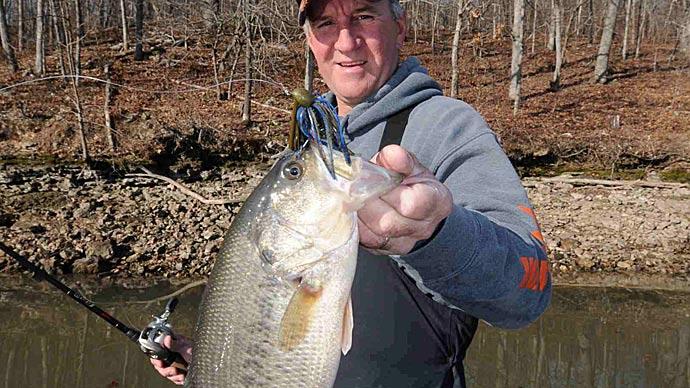
Once the shallows warm up, bass will take to the spawn during the spring months. After the spawning ritual is done, the female bass will head towards deeper water to recuperate, leaving the males in the shallows to protect the newly hatched fry until they can survive independently. Once that is done, the males will start to head towards their summer homes and join up once again with the females.
For some of the bass population, the shallow water slop and heavy cover will serve as a home during the summer months, but for the rest of the bass population, deeper weed edges will play host to a significant number of bass. Specifically, thick weeds that are located on the outside edges of weed flats. If you can put this area on or close to a dropoff that reaches deeper water, that will make this location even that much better.
The other productive areas are when you can find thick clumps of weeds on the edge of the weed line or locate just outside the weed line. Mix rock into these areas, and you have the best of locations that will attract big bass for the summertime months.
To find these areas, you will need to rely on lake maps, Navionics chips, and electronics. To pick the outside edge apart, I use my Humminbird 1197. With the Navionics map chip, I can see every turn and point on the weed line. Team this with Side Imaging, and I get a clear picture of what the weed line looks like and where the fish may be holding. I can see where the isolated weed clumps are located and how to target them when looking for weed clumps. If you don't have a Humminbird Side Imaging unit, you can use your regular electronics to focus on the outside weed line. Use a lake map or map chip to find the key areas, go back and forth to get an idea of the layout of the weed line, and start your work from there.
When it comes to the fishing side of this presentation, snap/pop jigging is nothing for the faint-hearted or light tackle. This is power bass fishing 101. A seven-foot heavy bait caster rod to a seven-and-a-half-foot flippin' stick matched with a fast retrieve 6.4:1 to 7.1:1 reel are standard. The fast retrieve reel is that once you stick a bass, you have to get the bass turned and out the cover fast. Spool these reels with twenty to twenty-five-pound fluorocarbon line.
On the business of your line, you will need a one-half to three-quarter-ounce jig. My choice of jigs for this pattern is an Outkast RT Jig teamed with an Outkast Chunk. The key to this pattern is to pitch the jig into the think clumps of weeds and let the jig fall to the bottom. You don't want to make long casts with this technique. If you cast too far, you won't be able to snap/pop the jig to get the action out of the presentation that will trigger strikes.
Give the jig a good snap once you have made your short cast or pitch. This will pop the jig up and out of the weeds, and on a managed slackline, let the jig fall back to the bottom and repeat the process. The jig popping off of the bottom and snapping free of the weeds is the triggering factor to the bass. Pay special attention to the jig as it's falling as this is when most of the bites will come.
The heavier the jig you use for this pattern, the better it will work. A three-eights-ounce jig will not work as well as one-half to three-quarter ounce jigs. The key here is you're playing off of the bass reaction bite for this presentation. The erratic snapping and hopping of the jig is what triggers the bass to bite. That is why a heavier jig works best for this type of presentation.
When the bass move towards the weed flats and outside edge for the summer months, give this snap/pop jig tactic a try. Heavy equipment is a must for this tactic. It's power bass fishing at its best. The heavier the jig, the more erratic its fall, the more bites you will get.




